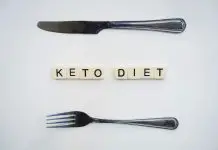Many of us will have seen heart attacks portrayed in movies and on TV as someone breaking out in a sweat, grimacing in pain and clutching their chest.
Doctors call it the “Hollywood heart attack”. Many people thing that this is how all heart and angina attacks look and feel but that is not the case.
Symptoms of heart and angina attacks can range from being very subtle to severe pain and it is important to be aware of all the early signs. People often ignore the early symptoms as they expect them to be just as they have seen on TV.
This leads to some people putting off getting medical attention, which can prove to be fatal.
Don’t ignore subtle symptoms – Angina
While chest pain is one of the most common indicators of angina, CHD and heart attacks, other more subtle symptoms include breathlessness, palpitations and a feeling similar to indigestion.

When coronary arteries become partially blocked it can lead to chest pain. This does not always start out as the severe stabbing sensation that may be expected however.
Angina attacks can show themselves as a mild, uncomfortable feeling in the abdomen, similar to indigestion – hence why it is often missed as a symptom. Angina attacks may also present as a heavy or tight feeling, usually beginning in the centre of the chest. This feeling may spread to the arms, neck, back, jaw or stomach.
An angina attack is usually the result of physical exertion or stress. They usually pass within around 10 minutes and can be relieved by resting or with the use of medication such as a nitrate tablet or angina spray.
Heart attack indicators
A heart attack is caused when coronary arteries are completely blocked. Heart attacks can permanently damage the heart and if not treated immediately, be fatal.
Symptoms of a heart attack are often similar to that of an angina attack but more severe. When suffering a heart attack other symptoms may be experienced such as nausea, breathlessness, sweating and light headedness.
It can also feel as if the pain is traveling to other parts of the body, similarly to angina attacks, the arms, neck, jaw, back and abdomen.
A symptom that is often not recognized as the start of a heart attack is a feeling again mistaken for indigestion. A feeling of heaviness on the chest, ache in the stomach and even heartburn can be an early indicator of a heart attack.
Unlike an angina attack, heart attacks can happen at any time without any obvious cause. The symptoms won’t usually be relieved with nitrate tablets or spray and if they last over 15 minutes, it could be the beginning of a heart attack.
In some cases, people may not experience any symptoms at all when having a heart attack. This is called silent myocardial infarction and is most common in people who suffer diabetes.
Women and men’s symptoms may differ
It is important to remember that women often experience different symptoms than men. Women, especially those under 45, can have a heart attack without feeling any pain or discomfort.
It is important to know and be able to recognize the varying symptoms of angina and heart attacks as delayed medical treatment can be fatal. According to the British Heart Foundation, 1 in 3 heart attack victims die before they get to hospital as many people fail to recognize the symptoms.
One study found that half of the people they studied, who had experienced heart attack symptoms, delayed seeking medical help for 4 hours.
Being able to recognize even the most innocuous symptom of a heart attack can save lives. If unsure, you should always seek medical help and with specialized private clinics available there is every opportunity to get health checks completed so as to not put yourself in danger, or certainly to limit the risk by getting full early diagnosis.








































